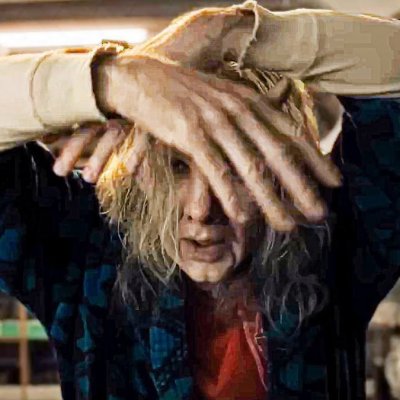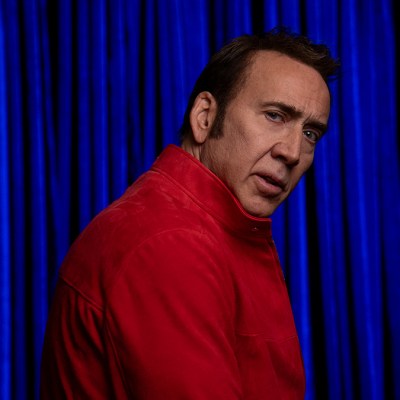It sometimes feels like most of the 80 million copies of The Da Vinci Code that have reportedly been sold since the novel’s 2003 release ended up in second-hand bookshops or on the sidewalk next to a sign that says “Free Books.” One of the biggest literary sensations ever now feels like a photo of that haircut you had in high school. It’s the kind of thing that can trigger vague memories of a different era while making you ask “what was I thinking?”
Yet the acclaim for 2004’s National Treasure, one of the earliest notable works that emulated The Da Vinci Code’s success, has only grown in recent years. The Nicolas Cage-led movie about rival treasure hunters following a map written on the back of the Declaration of Independence was always fiscally successful. However, it has gone from a critically derided guilty pleasure to a movie that the internet has reclaimed and openly celebrated as an ideal example of blockbuster entertainment. It’s a pretty shocking reversal of fortune for a work once considered a ripoff of what had quickly become a cultural phenomenon.
Granted, the relationship between National Treasure and The Da Vinci Code has always been more spiritual than logistical. Filming on National Treasure didn’t begin until The Da Vinci Code was already shooting up the sales charts, but the basic idea for the movie was in development as early as 1999. National Treasure’s marketing and production were almost certainly influenced by The Da Vinci Code’s success, but it’s not like Disney hit the big green “cash-in” button in 2003 and watched as their machine churned out another trend-chaser.
Still, the similarities have always been striking. They are, after all, both stories about people trying to uncover the truth by gathering clues at famous tourist sites, solving puzzles, and spouting often wildly inaccurate historical babble laced with conspiracy theories. Hence numerous, and notable, National Treasure reviewers comparing the movie to The Da Vinci Code at the time of its release in often unflattering ways.
Mind you, many of those reviewers who criticized National Treasure weren’t necessarily defending The Da Vinci Code. Both works were seen by some as fundamentally cheap forms of entertainment that used basic puzzles and vague historical references to appear smarter than they were. Indeed, National Treasure may have taken stray shots from those who saw The Da Vinci Code as a pulpy work masquerading as a great novel released at a time when critics feared that respect for the average reader’s intelligence was at an all-time low. Others felt it was a dangerous piece of information manipulation.
That is the most fascinating distinction between the two projects. Dan Brown and The Da Vinci Code’s publishers had to have known that a story about religious conspiracy theories that presented itself as at least a plausible concept was going to generate controversy. However, it’s difficult to imagine anyone getting truly upset about National Treasure’s plot involving a treasure map on the back of the Declaration of Independence, and loose ties between the Knights Templar, Freemasons, and the Founding Fathers. It was not intended to incite anything more intense than a History Channel binge.
You can research the real history behind the movies’ many references if you’d like, but I’ll save you some time. Most of the historical information in that movie was either made up or strung together with just enough plot thread to get Nicolas Cage from one U.S. landmark to the next. Not since Clark Griswold loaded the kids into the family truckster has a movie gotten so much joy from visiting some of the biggest American tourist traps.
In terms of both works’ legacies, that joy may be the determining difference. Some were genuinely offended by The Da Vinci Code, but the most common criticism came from those who found it to be a dime novel that somehow generated hundreds of millions of dollars. A beach read is one thing, but it’s easy to revile a beach read hailed as “genius” by people who read only one book a year, or genuinely believed the novel was exposing the truth that “they” don’t want you to know. It didn’t help that there was an underlying pretentiousness to The Da Vinci Code that was heightened by the subsequent discourse that made it seem so much more substantial than it ever really was.
By comparison, National Treasure is remarkably unpretentious. It’s hard to put on airs when you’re suggesting with a straight face that someone hid Benjamin Franklin’s special glasses in a marked brick that could one day be used to find a medieval treasure trove. To quote Harrison Ford, “It ain’t that kind of movie.”
Whereas The Da Vinci Code feels like it was authored by that dude at the party in the sports coat who won’t stop talking about metaphysics, National Treasure feels like it was crafted by the dungeon master who always brings the best snacks and scenarios. It’s nerdy in a way that makes it feel like the slightly more adult version of an ‘80s kid’s adventure movie and not a “well, actually” lecture that falls apart at the first fact check.
The Da Vinci Code is a supremely entertaining thriller that is easy to binge-read and enjoy. Yet those elements of the book that once helped it reach unfathomable heights—the intrigue of its vague conspiracies and the controversies they caused—now feel embarrassing to look back at as anything that folks could take as seriously as they did. By comparison, those simply silly pleasures of National Treasure feel as joyful as ever. Actually, given National Treasure’s largely negative critical reception at the time, it’s fair to say that many more people seem to unabashedly enjoy the film now than ever before.
National Treasure is a practical summer blockbuster (even if it came out in November) with its “dad movie” veneer being rooted in history. It’s a heist thriller with an incredible original score wrapped around a new IP and filled with veteran character actors (Sean Bean! Harvey Keitel! Pre-insanity Jon Voight!) mingling with up-and-coming stars. You can watch it with pretty much anybody, and it’s the kind of movie you will keep watching if you happen to catch it in the middle of a rerun.
National Treasure is not an undeniable masterpiece or a cinematic game-changer. It is, even by the admission of those who love it, a brainless romp that is often cheesy and relies on a suspension of disbelief that borders on faith. Yet those qualities are what make it endearing. It’s also what people are asking for when they look at modern blockbusters and say, “They don’t make them like they used to.”
Just look at the 2006 Da Vinci Code movie for the clearest contrast between the projects. That film may have debuted at Cannes with Oscar aspirations, but it ultimately delivered an experience as fundamentally ridiculous as National Treasure with less of the intended fun. Even star Tom Hanks suggested that it’s best to look at the movie as “hooey and fun [with] scavenger-hunt-type nonsense.” Yet that movie’s aura of elevated drama perfectly captures how people saw The Da Vinci Code at that time, even as it exposed how shallow that story was.
Yes, it’s easy to turn against something popular simply to be contrarian. The Da Vinci Code is one of the most successful books ever written, which makes it all the more tempting to take it down several pegs. At the same time, National Treasure’s coronation isn’t entirely based on that equally powerful desire to root for the underdog. As easily as some have disposed of their copies of The Da Vinci Code, they have returned to the seemingly disposable National Treasure because it still offers something of value: an uncomplicated good time that is somehow always exactly what you want, and slightly better than you remember.
The Da Va Vinci Code and National Treasure both deal with the value of examining objects millions have seen thousands of times from different perspectives that will reveal a hidden truth within. It’s telling, then, that the many rewatches of National Treasure that have occurred in the last 20 years have only endeared it in the hearts of those millions. Conversely, so many reappraisals of The Da Vinci Code are based on the desire to look upon this 2000s era artifact and try to see it as those from another time and place once did.
The post National Treasure: How a Da Vinci Code Ripoff Outlived and Surpassed the Real Thing appeared first on Den of Geek.




0 Commentaires